| Share |  |
 | |||
Rejuvenate Your Body With a Spring Detox Cleanse
Spring is a great time to do a thorough housecleaning. We all know that just surface cleaning is not enough to deal with the build-up of dirt and grime that accumulates in the “nooks and crannies” of our homes over a period of many months. Likewise, our body “house” needs a periodic internal deep-cleaning to facilitate the removal of the load of toxic waste and debris that accumulates over time if it is to function at peak efficiency.
 Cleansing and detoxification is continually needed due to by-products produced within our cells from normal metabolic processes, in addition to cellular debris, and microbial toxins from yeast, bacteria and other microorganisms. Besides different internal toxins, the body must also constantly deal with exposure to multiple chemicals and other toxic substances contained in our food, water, air, personal care, household and other products we use. Taking measures to regularly boost our body’s detoxification mechanisms is especially important in light of the fact that the combined effect of all of these toxins can easily overwhelm what the body is capable of processing and eliminating.
Cleansing and detoxification is continually needed due to by-products produced within our cells from normal metabolic processes, in addition to cellular debris, and microbial toxins from yeast, bacteria and other microorganisms. Besides different internal toxins, the body must also constantly deal with exposure to multiple chemicals and other toxic substances contained in our food, water, air, personal care, household and other products we use. Taking measures to regularly boost our body’s detoxification mechanisms is especially important in light of the fact that the combined effect of all of these toxins can easily overwhelm what the body is capable of processing and eliminating.
In this article you will learn about the importance of detoxification and practical guidelines for following different types of detox diets. You will also learn about the many ways that regularly detoxifying your body can work to clear symptoms and resolve commonly experienced health concerns and why taking time to regularly cleanse and detoxify your body is one of the most powerful health habits you can develop to protect your health and well-being.
How Toxins Impact our Health
When toxins are not efficiently detoxified and quickly eliminated, they either accumulate in fatty tissues or recirculate throughout the bloodstream, producing inflammation and free radical damage in the cells, tissues, glands and organs of the body. This toxic accumulation disturbs the normal function of cells by interfering with their ability to assimilate nutrients and eliminate waste efficiently.
Moreover, toxins directly damage cell receptors and mitochondria (the energy-producing factories of our cells). This interferes with appetite and weight-control mechanisms as well as disrupts hormone balance and cellular communication, all of which can block normal bodily processes and hinder the self-healing mechanisms of the body.
Since the disease process starts as a result of compromised cellular function, an overload of toxins greater than what our cells can effectively handle can lead to all types of symptoms and health disorders. Toxic build-up may contribute to conditions such as fatigue, headaches, muscles aches, pains and stiffness, skin outbreaks, intestinal inflammation, mood swings, poor concentration, chemical sensitivities and inability to lose weight. It may also directly or indirectly result in more serious conditions such as fibromyalgia, chronic fatigue, multiple sclerosis, heart disease, neurodegenerative disorders such as Alzheimer’s and Parkinson’s disease and cancer (it is estimated that 60 to 80 percent of all cancers are a direct result of chemicals in our air, water and food).
One of the best ways to maintain optimum health, prevent disease and resolve all types of health problems is support the body’s ability to detoxify and safely eliminate toxins before they wreck havoc throughout the body.
The Detox Solution
How can we avoid the problems caused by too many toxins? Besides making the effort to reduce our exposure to them, the best way is to set aside the time to engage in detoxification measures on a regular basis.
What is detoxification? Detoxification is simply the process by which the body either neutralizes or releases harmful substances that accumulate in cells, tissues and organs in order to free it of excess acidity, mucus, and congestion. Throughout history, the practice of detoxification has been used as a means to cleanse the blood of toxins in order to prevent disease and to foster health and healing.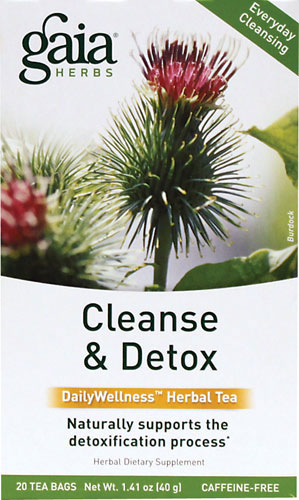
Following a detoxification program involves abstaining from toxic dietary and lifestyle habits for a time while using pure food, water, juices, broths, teas, herbs, enzymes and other means and methods to help facilitate the release of stored toxins and hasten their removal through the various organs of elimination (colon, kidneys, lymphatic systems, respiratory tract and skin).
The Amazing Benefits of Detoxification
The practice of regularly detoxifying the body removes some of the root causes of symptoms and health disorders, resulting in relief from common conditions (such as fatigue, headaches and joint pain) to improvements in more major conditions (such as fibromyalgia, arthritis, heart disease and cancer). Even apart from resolving health issues and clearing symptoms, detoxification works to:
Give the digestive system a much-needed break – when the digestive organs (especially the liver) get a reprieve from constantly breaking down and processing the kinds of harder-to-digest foods people normally consume, the body can catch up on dealing with the backlog of toxic waste stashed away in cells and tissues. Symptoms of poor digestion and intestinal inflammation are often relieved when the intestinal tract is able to heal and repair.
Enhance absorption of nutrients - getting rid of accumulated toxins frees up the body to efficiently process food and assimilate nutrients. The easier nutrients absorb, the more readily they can nourish, build, and repair cells, which makes all the processes and systems of the body function optimally.
Increase energy and vitality – clearing the body of sludge and the toxins that keep it from running efficiently promotes rejuvenated energy along with greater health.
 Strengthen the immune system - the less the immune system must deal with toxins such as heavy metals, pesticides and synthetic medications, the more able it is to defend against true invaders such as pathogens as well as destroy cancer cells.
Strengthen the immune system - the less the immune system must deal with toxins such as heavy metals, pesticides and synthetic medications, the more able it is to defend against true invaders such as pathogens as well as destroy cancer cells.
Eliminate excess body fat – detoxification is a central component in long-term effective weight management and creating a healthy metabolism. Since fat cells are used to store toxins to protect other parts of the body from them, greater amounts of fat cells means more toxins are potentially stored in the body. Detoxification helps to release those toxins plus prevents the disruption to the body’s weight-regulating mechanisms that occurs when thyroid receptors are damaged and signals from appetite and weight-regulating hormone and neurotransmitter are blocked. People can shed pounds much easier when a major root cause of their sluggish metabolism and increased body fat is eliminated. Cleansing the liver particularly helps with weight loss since it allows the liver to better do its job of breaking down fats.
Improve mood and mental function – toxins that settle in fatty tissues of the brain trigger mood and behavioral changes as well as adversely affect neurons in the areas of the brain involved with memory and focus. Detoxification helps to release these toxins that disturb the central nervous system and alter the balance of neurotransmitters. The release of these toxins can help to enhance mental clarity and improve conditions such as brain fog, forgetfulness, mood swings, depression, etc.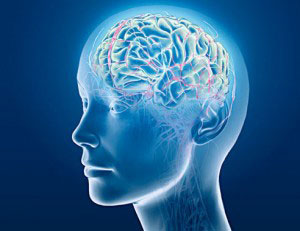
Balance hormones – reducing toxic overload can improve many symptoms of hormone imbalance due to how toxins affect hormone levels. Supporting liver detoxification, for instance, helps prevent the hormone imbalance of estrogen dominance by enabling the liver to break down excess estrogens (including xenoestrogens) as well as synthetic hormones that can build up and contribute to symptoms of hormone imbalance and the development of female cancers.
In addition to the areas listed above, detoxification can also result in reduced cravings, freedom from addictive habits (sugar, caffeine, alcohol, etc.) clearer skin, improved quality of sleep, improved flexibility and relief from muscle and joint aches and pains, reduced effects of aging, elimination of excess mucous and congestion, less fluid retention, improved fertility and even elimination of bad breath or a coated tongue.
What Signs Point to the Need for Detoxification?
A person may exhibit any number of signs or symptoms that indicate the body needs to reduce its toxic load and focus on eliminating toxic build-up. Though by no means an all-inclusive list, some of the more obvious ones, grouped by categories, are as follows:
- Mental - difficulty concentrating, mental sluggishness, slow or fuzzy thinking
- Emotional - overall negative outlook; sudden, uncontrollable mood swings; feeling apathetic, dull or listless
- Energy level - extreme or persistent fatigue, feeling lethargic, exhausted by ordinary activity, or tired after a good night’s sleep
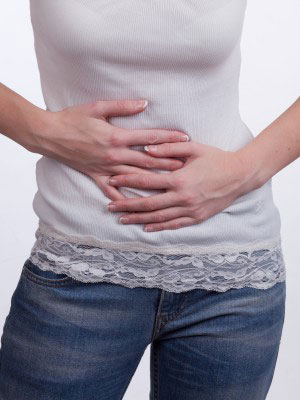
- Skin – dull or unusually pale or sallow complexion, skin that is loose or flabby, unpleasant odor
- Eyes - dark circles, swollen or inflamed eyelids, bags under eyes, bloodshot eyes
- Tongue - swollen, yellow, grayish-white or thick film coating, shiny
- Digestive difficulties - heartburn or indigestion, bloating after eating, excessive gas, abdominal discomfort after eating or adverse reactions to eating certain foods
- Respiratory Conditions – runny nose, coughs, wheezing, frequent colds, sinus congestion
What Detoxification Involves
The body constantly works to eliminate toxins via the lungs, kidneys, and the liver, in particular, as it is the primary organ of detoxification. Everything we breathe, eat, and absorb through our skin must first go to the liver. One of the many roles of the liver it to act as the body’s filter to trap and break down every substance that is toxic, including metabolic waste, heavy metals, food additives and preservatives, insecticide and pesticide residue, drugs, alcohol and other types of chemicals found within our environment. A liver that functions at full capacity filters about two quarts of blood each minute and can filter about 99% of the toxins out of the blood before the blood is sent back through the body (as a side note, people generally lose one to two percent of their liver function each year so a liver that functions at full capacity would be unlikely).
Through its two-phase detoxification phases, the liver transforms fat-soluble chemicals into water-soluble ones that can more easily be eliminated from the body through urine, feces, sweat, mucus, and breath. If the liver detoxification pathways that break down, eliminate, and neutralize these toxins become drained of the antioxidants, enzymes, and other nutrients essential to the process, the incomplete metabolic by-products produced end up to be more dangerous and damaging to the liver and body than the original toxins.
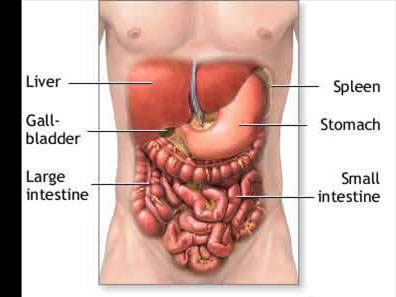 Following a detox diet, however, gives the liver a much-needed break from having to process chemicals and hard-to-digest foods and instead provides it with much higher levels of these plant-based nutrients in a form that is easy for the body to digest and assimilate. The liver then has what it needs to successfully detoxify and eliminate a backlog of toxins in a way that does not create free radical damage to its cells or other cells throughout the body (for more information on liver detoxification, see my article “Detoxifying for Better Health – Part 3” )
Following a detox diet, however, gives the liver a much-needed break from having to process chemicals and hard-to-digest foods and instead provides it with much higher levels of these plant-based nutrients in a form that is easy for the body to digest and assimilate. The liver then has what it needs to successfully detoxify and eliminate a backlog of toxins in a way that does not create free radical damage to its cells or other cells throughout the body (for more information on liver detoxification, see my article “Detoxifying for Better Health – Part 3” )
Because the liver disposes of toxic substances by depositing them in bile that it releases into the intestinal tract, a crucial prerequisite for successful detoxification is a well-functioning colon that is free of toxic build-up. The problem is that toxins that linger in the colon can easily be reabsorbed into the bloodstream and recycled back to the liver if the colon is not efficiently eliminating waste. This increases the workload of the liver as it must once again deal with them plus it places a further burden on the other channels of elimination. A good detoxification program includes steps that first ensure any sluggish eliminative organs are working well so that toxins can be efficiently dispelled from the body (see my article on “Detoxifying for Better Health – Part 2” for more detailed information on preparing the colon, kidneys and skin for a successful detox).
Types of Dietary Detoxification Plans
Although many different means and methods are used to facilitate the release of stored toxins in the body, the focus of this article is the use of detox diet plans. Detox diet plan protocols often vary in their duration, composition, and level of intensity and there is no only way to detox” plan.
Some detoxification programs involve systematically cleansing all of the organs of the body that play a role in eliminating toxins and may take as long as long as four to six weeks. Even though the health benefits of a more intense “total body cleanse” program may be more dramatic, it is le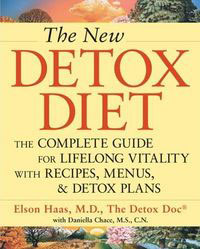 ss likely that the average person is willing to invest that degree of time and effort. It is important to realize that even a one to three day protocol can still result in good health benefits. If you want a detox with more significant results, a week to ten days is an ideal amount of time and is more typically recommended.
ss likely that the average person is willing to invest that degree of time and effort. It is important to realize that even a one to three day protocol can still result in good health benefits. If you want a detox with more significant results, a week to ten days is an ideal amount of time and is more typically recommended.
Guidelines for the types of foods and beverages you can and cannot have on a detox diet varies with the focus and degree of strictness of each plan. In his book "The New Detox Diet," Dr. Elson Haas gives a list of some of the different levels of dietary detoxification that range from less rigorous to more strict. A detox diet protocol could consist of any one or a combination of these levels:
- Basic detox diet – consists of fresh fruits and vegetables (both raw and cooked), whole grains (cooked and sprouted), seeds (raw or sprouted) or legumes eaten fresh in salads
- Fruits, vegetables, whole grains, seeds, and legumes
- Raw foods – sprouted greens from seeds and grains, sprouted beans, soaked or sprouted raw nuts and fresh fruits and vegetables
- Fruits and vegetables - all cleansing foods that support purification of the intestinal tract
- Fruit and vegetables juices - juices help eliminate wastes and dead cells while building new tissue with easily accessible nutrients
- Specific juice cleanses – master cleanser, apple, carrot, and greens, etc.
Special note: Using an “only water” fasting type of detox is not recommended as it actually hinders the liver’s detoxification processes that depend upon certain amino acids from proteins as well as other key nutrients like anti-oxidants to prevent oxidative damage to the cells and tissues of the liver and other organs.
What Detox Diets Have in Common
Even though there are countless types of detoxification protocols, the dietary recommendations with regard to what foods to avoid are very similar for the most part. Just staying away from these foods and beverages for a period of time alone will benefit your health by lessening toxic build-up and improving elimination even if you do not follow all of the other recommendations.
- Processed foods – fast food, junk foods, foods made with flour and basically any food that comes in a box, package or can that contains additives, preservatives or other unnatural ingredients
- Sweeteners – this includes all forms of sugar (even natural sweeteners like coconut sugar and honey), artificial sweeteners, sugar alcohols and stevia (though it is a natural herb, it still stimulates sweet cravings and should be avoided while detoxifying)
- Caffeine and alcohol – coffee, soda, black tea, beer, wine and other forms of alcohol
- Chocolate – contains caffeine, sugar and dairy
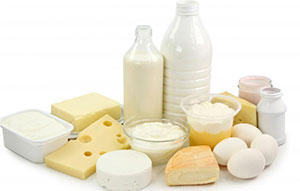
- Common food allergens – milk and dairy products, gluten grains (wheat, barley, rye, spelt, kamut, triticale and most oats), eggs, corn, peanuts, soy, citrus fruit (except for lemons and limes)
- Animal proteins – while some detox diets allow small amounts of organic chicken or small, non-predatory species of wild-caught fish, animal proteins are generally considered more acidic and harder to digest, and therefore, hard on the liver and not recommended for a detox diet. Red meat should especially be avoided for these reasons. Warm water and tropical fish as well as shellfish should also be avoided as they have great potential for heavy metal and parasite contamination Any type of processed meat has no place in a detox or other healthy diet.
- Nightshade vegetables – potatoes, tomatoes, eggplant, bell peppers and sweet peppers are rich in alkaloids that can be mildly toxic to a fair number of people. The potential of nightshade vegetables to suppress digestion and increase inflammation in the body makes it wise to omit them during detoxification programs.
- Condiments – ketchup, mayo, Worcestershire sauce, barbecue sauce, table salt and all other dressings and seasonings. (things like vegetables salt, sea salt, naturally fermented soy sauce or tamari, liquid aminos, miso or any culinary herbs and spices may be used)
- Fats and oils – avoid all fats and oils except for extra virgin olive oil, extra virgin coconut oil, unheated flaxseed oil and limited amounts of organic butter
The idea is to shift away from what are the most congesting foods that increase body acidity and lead to more mucus production (things like meats, milk products, sugar, breads, and baked goods as well as foods that are refined, fried or fatty), and shift instead towards the least congesting foods that decrease acid waste and enhance cleansing (more fruits, vegetables, nuts, seeds, legumes and non-gluten whole grains). Among the foods that are least congesting and more alkaline and detoxifying, fruits, greens, herbs and water produce the most powerful detoxifying effects. While the others mentioned are acceptable on certain types of detox diets, their detoxifying effects may not be as profound.
Choosing a Detox Diet Right for You
The best type of detox diet is one that you find doable and can stick with. The most important thing is to give your overloaded digestive organs a chance to rest and repair and your liver, in particular, a chance to catch up on past work by avoiding the types of foods and beverages referred to in the previous section.
Regardless of the type of detox diet you do, be sure to drink plenty of pure water to help flush out toxins through the kidneys. Also, ensure that you get plenty of fiber to bind toxins in the colon in order to speed up the removal of toxic waste. 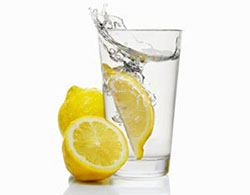
I have included a few examples of recommended detox diet protocols from different sources. I would encourage you to read through them to glean ideas about what might work well for you. You can take the basic elements involved (raw fruits and vegetables, steamed vegetables, fresh juices, soups and broths, herbal teas (detox blends are available) smoothies, brown rice or other non-gluten grains, etc.) and integrate them how you want to create your own detox program.
Daily Menu Plan for “New Detox Diet” by Dr. Elson Haas
To give you an idea of a sample daily menu plan for a detox diet, the one Dr. Haas describes in his book “The New Detox Diet” begins with drinking two glasses of water upon rising (one with a half of lemon squeezed in it). For breakfast, one piece of fruit can be consumed - he suggests fruits such as an apple, pear, banana, or some grapes, followed 15-30 minutes later by one bowl of cooked whole non-gluten grains (brown rice, amaranth, millet or quinoa) which can be flavored with two tablespoons of fruit juice for sweetness, one tablespoon olive oil and organic butter spread (a blended spread of half olive oil and half organic butter) and salt or tamari to taste. For lunch he recommends one to two medium bowls of steamed 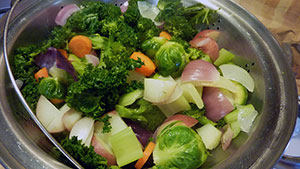 vegetables (a variety that includes roots, stems, and greens – potatoes or yams, green beans, broccoli or cauliflower, carrots or beets, asparagus, kale or chard, and cabbage). One to two teaspoons of olive oil and butter spread may be used with the vegetables. Dinner is the same as lunch with the exception that those who are experiencing fatigue may add three to four ounces of fish, poultry or bean. He also recommends drinking the water from the steamed vegetables mid-morning and mid-afternoon as it contains many nutrients and offers a more alkaline balance for the body (veggie salt, sea salt or garlic salt can be added to the vegetable water for increased flavor). After dinner, only water and herbal teas may be consumed.
vegetables (a variety that includes roots, stems, and greens – potatoes or yams, green beans, broccoli or cauliflower, carrots or beets, asparagus, kale or chard, and cabbage). One to two teaspoons of olive oil and butter spread may be used with the vegetables. Dinner is the same as lunch with the exception that those who are experiencing fatigue may add three to four ounces of fish, poultry or bean. He also recommends drinking the water from the steamed vegetables mid-morning and mid-afternoon as it contains many nutrients and offers a more alkaline balance for the body (veggie salt, sea salt or garlic salt can be added to the vegetable water for increased flavor). After dinner, only water and herbal teas may be consumed.
"Maker’s Diet Seasonal Cleanses" by Jordan Rubin
Some detox diet plans vary the composition of the diet according to the season. For instance, Jordan Rubin in his book "The Maker’s Diet for Weight Loss" promotes quarterly 10-day detoxification seasonal cleanses that take place in January, April, July and October. For his Winter Cleanse, he has people consume a homemade “Cleansing Chicken Soup” four times a day that is full of all types of vegetables along with ingredients such as fresh ginger, raw apple cider vinegar, fresh parsley and coconut oil. For the fifth or dinner meal (you eat five times a day every two to three hours on his program), he advises eating a healthful fresh salad that you can add a half of avocado to for healthy fat intake. Dressing for the salad should be made only from extra virgin olive oil, apple cider vinegar or lemon and whatever natural herbs, spices or seasonings you choose along with sea salt or liquid aminos. Raw nuts and seeds can be added to the salad on days 5-7 and, on days 8-10, you are allowed four ounces of organic unsweetened whole milk yogurt or kefir and one tablespoon of raw honey for the third and fourth meals plus a small amount of either fatty fish (ideally small, wild-caught non-predatory species) or raw cheese that can be added to the dinner salad to help with the transition of returning to a more normal diet. Spring and Fall cleanses consist of primarily lower-sugar fruits for the first two meals, the soup for the next two meals and the salad for the dinner meal. The same guidelines apply for adding in the extra protein items on days 5-7 and 8-10 as the winter cleanse protocol recommends. The Summer Cleanse starts out with five servings of one to two cups of a cleansing fruit (watermelon, apple, grapes and oranges) for the first two days followed by four meals with fruit and a dinner salad for the fifth meal on days 2-4. Days 5-7 and 8-10 follow the same guidelines as for the other cleanses.
Smoothies, Shakes and Broths – by Dr. Elson Haas and Dr. Mark Hyman
Smoothie cleanses, referred to in Dr. Haas’s book, are generally a one to two week liquid diet that consists of fruit smoothies, vegetables juices and smoothies with extra nutritional boosters such as green powders, rice, pea or whey unsweetened protein powders (especially important for those who do not wish to lose weight, for athletes who want to retain muscle mass, and for those with low blood sugar issues), ground flax seed, flaxseed and/or coconut oil, vitamin C powder, algae, probiotics, ionic minerals and other supplements. 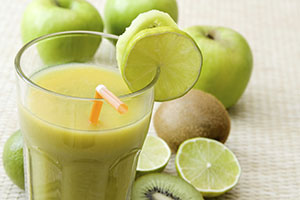
The base recipe for a smoothie calls for one cup of liquid (water, fresh juice, or non-dairy milks like rice milk, almond milk, coconut milk, etc.) and one cup of fresh or frozen fruits combined in blender. A smoothie should be consumed as soon as possible while the ingredients are still fresh to prevent oxidation (loss of or denaturing of nutrients due to exposure to air and light). A detox diet may consist of a combination of drinking water, lemon water, fresh vegetable and/or fruit juices and different types of smoothies throughout the day. Dr. Haas has several recipes for different types of smoothies beneficial for detoxification in his book "The New Detox Diet."
Included in Dr. Mark Hyman “UltraShake” recipe taken from "The UltraSimple Diet" are ingredients that provide essential protein for detoxification (2 scoops rice protein powder), omega-3 fatty acids (1 T. flaxseed and borage oil), fiber (2 T. ground flaxseeds) and anti-oxidants and other phytonutrients (1/2 cup berries or other fresh or frozen non-citrus organic fruits). These ingredients should be combined in a blender with 6-8 ounces of water and ice if desired to provide a great way to nourish your body as part of a detox diet. Dr. Hyman also has a recipe for “Ultra Broth” that you may find at this link: http://drhyman.com/blog/2010/05/30/recipe-ultrabroth/. This broth is rich in minerals and other healing nutrients to nourish and alkalize the body. Dr. Hyman recommends consuming this broth three or four times per day as part of his recommended detox/weight loss diet.
7-Day Eco-Tox Diet by Dr. Peter Bennett and Dr. Stephen Barrie
This week long detox cleanse recommends starting out with two days of fasting with liquids only (water, lemon water, herbal teas and fresh juices if necessary) to more quickly allow the body to dismantle the backlog of poisons in the tissues and cleanse the blood (according to the authors, the body has adequate food stores for two days of fasting). If a person is in a debilitated condition or cannot afford to lose any weight, a protein shake (unsweetened rice or pea protein is best) can be consumed two to three times a day 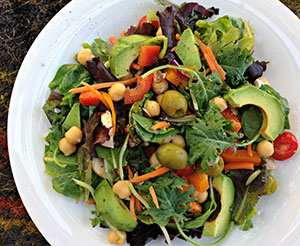 during those two days. The remaining five days are very simple: each day starts out with eight ounces of hot lemon water. Breakfasts may consist of a rice protein shake made with fresh fruit, fruit juice, fresh fruit, and rice cakes while lunches and dinners consist of steamed or lightly sautéed vegetables, rice, soup and salad. Snacks in the morning and afternoon can be things like fresh fruit, protein shake, rice cake or herbal tea. Basically, you can eat as much as you want of cooked and uncooked fruits, vegetables and brown rice (amaranth or millet non-gluten whole grains are fine as well). While raw fruits and vegetables are preferred due to the greater amounts of vitamins, minerals and enzymes, people who have difficulty digesting them can opt more for freshly made fruit and vegetables juices and vegetables that are steamed, lightly sautéed or baked.
during those two days. The remaining five days are very simple: each day starts out with eight ounces of hot lemon water. Breakfasts may consist of a rice protein shake made with fresh fruit, fruit juice, fresh fruit, and rice cakes while lunches and dinners consist of steamed or lightly sautéed vegetables, rice, soup and salad. Snacks in the morning and afternoon can be things like fresh fruit, protein shake, rice cake or herbal tea. Basically, you can eat as much as you want of cooked and uncooked fruits, vegetables and brown rice (amaranth or millet non-gluten whole grains are fine as well). While raw fruits and vegetables are preferred due to the greater amounts of vitamins, minerals and enzymes, people who have difficulty digesting them can opt more for freshly made fruit and vegetables juices and vegetables that are steamed, lightly sautéed or baked.
The authors of this book also emphasize the need to gradually introduce back into your diet heavier foods after the week of detox is over, beginning with limited amounts of lighter proteins like eggs (ideal with their perfect amino acid balance), fish or fowl over a period of three days. After that, other foods can gradually be added back in but it is important to observe your body’s reactions to determine if any upset your digestive system or produce symptoms of food sensitivities. This basic strategy would be great advice to follow for any type of detox diet.
Preparation Tips to Enhance Your Success
If it is to be successful, a detox cleanse requires a certain amount of planning, discipline, and motivation as well as a willingness to undergo some discomfort, deprivation and inconvenience. One key to success is to set aside the week before you begin the program to make preparations mentally and physically and to line up what you are going to eat or drink during your detox diet.
Discomfort from abrupt dietary changes can be minimized by eating a diet the week before you start that is relatively free of things like sugar, caffeine, and refined and processed foods. The cleaner the diet prior to beginning a cleansing detox program, the less detox symptoms such as fatigue, headaches, body odor, bad breath, itchy skin and sleep disturbances will be a problem. For people who already eat a relatively “clean” diet, this preparation phase may only need to be a few days.
Detoxing from Coffee
For those who are addicted to caffeine, Dr. Mark Hyman offers a 7-day plan that he suggests engaging i n one week prior to the start of a detox or cleansing diet in order to minimize the pain and difficulty involved in going off this drug-like substance during a detox. Start the process on a weekend when you can get extra rest as needed since you will likely suffer some fatigue. For the first three days, begin to wean your body off caffeine by cutting your daily intake of coffee, cola, black tea, or other caffeinated beverages in half for each of the three days (i.e., if you normally drink four cups of coffee, cut it first to two cups the first day, one cup the second and one-half cup the third). For the next four days, you can drink one cup of caffeinated green tea steeped for five minutes in boiling water, which may be continued during and even after the detox period as the caffeine in green tea is minimal and the health benefits are excellent. Another great help is to take 1000-2000 mg. of buffered pure ascorbic acid (Vitamin C) powder or capsules at least twice a day to help detoxify and balance the system. Last but certainly not least is to drink a minimum of 6-8 glasses of filtered water a day since keeping your body well-hydrated can reduce headaches, constipation, and help to flush toxins out of your system.
n one week prior to the start of a detox or cleansing diet in order to minimize the pain and difficulty involved in going off this drug-like substance during a detox. Start the process on a weekend when you can get extra rest as needed since you will likely suffer some fatigue. For the first three days, begin to wean your body off caffeine by cutting your daily intake of coffee, cola, black tea, or other caffeinated beverages in half for each of the three days (i.e., if you normally drink four cups of coffee, cut it first to two cups the first day, one cup the second and one-half cup the third). For the next four days, you can drink one cup of caffeinated green tea steeped for five minutes in boiling water, which may be continued during and even after the detox period as the caffeine in green tea is minimal and the health benefits are excellent. Another great help is to take 1000-2000 mg. of buffered pure ascorbic acid (Vitamin C) powder or capsules at least twice a day to help detoxify and balance the system. Last but certainly not least is to drink a minimum of 6-8 glasses of filtered water a day since keeping your body well-hydrated can reduce headaches, constipation, and help to flush toxins out of your system.
Most people can maintain a regular work schedule during a cleanse or detox program. But if you can, it is wise to time the start of a detox diet with the beginning of a weekend or other period of days when your workload is lighter since the first couple of days are usually the hardest. Also, try to schedule your week of detox when you do not have to be as busy as usual so that you can be sure to get the extra rest your body may need.
A Few Cautions
Detoxification can involve the experience of unpleasant symptoms as toxins are released from tissues into the bloodstream and lymphatic channels and travel to the various channels of elimination. These symptoms can include fatigue, headaches (more so during the first couple of days), irritability, sleep problems (insomnia or sleeping too much), body odor, bad breath, itchy skin, and increased gas from extra  vegetable fiber. It is important to keep in mind that detox reactions are indications that the body is working to cleanse toxins from the system. Understanding ahead of the fact that these symptoms can occur prepares you better to not allow them to dissuade you from continuing your detoxification program.
vegetable fiber. It is important to keep in mind that detox reactions are indications that the body is working to cleanse toxins from the system. Understanding ahead of the fact that these symptoms can occur prepares you better to not allow them to dissuade you from continuing your detoxification program.
Women who are pregnant or nursing should not engage in a detoxification diet that reduces caloric intake and decreases the amount of nutrition the baby may need. Also, if you have a serious health challenge or take medications regularly, you should consult with your health care professional before beginning a more rigorous detox program since the rate at which drugs are metabolized can change as your body detoxifies. In other words, revitalizing your body’s detoxification mechanisms may cause medications to clear from your bloodstream more quickly.
A Word about Supplemental Support
While increasing your intake of foods rich in phytonutrients helps supply the nutrients needed to support the detoxification organs and systems of the body, many detoxification experts recommend supplementing with certain key vitamins, minerals and antioxidants. Supplementation is considered especially essential due to the fact that shortages of critical nutrients can inhibit entire biochemical pathways, which, in turn, hinders the detoxification process.
The primary supplements recommended to quench the activity of free radicals and protect the body’s tissues from volatile chemical by-products that occur during the two phases of liver detoxification are vitamin 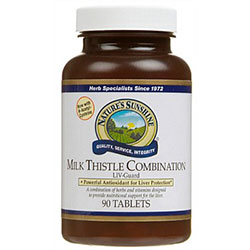 A, vitamin C, vitamin E, lipoic acid and the herb milk thistle, as well as the amino acids glycine, n-acetyl-cysteine and methionine. N-Acetyl Cysteine is the primary precursor to glutathione, the most powerful antioxidant that drives the mechanism for shuttling toxins out of the body.
A, vitamin C, vitamin E, lipoic acid and the herb milk thistle, as well as the amino acids glycine, n-acetyl-cysteine and methionine. N-Acetyl Cysteine is the primary precursor to glutathione, the most powerful antioxidant that drives the mechanism for shuttling toxins out of the body.
Certain types of herbs are highly beneficial to increase the flow of bile from the liver, facilitate the excretion of bile from the intestinal tract, enhance elimination and generally nourish all the systems and organs of the body. Probiotics, enzymes and fiber are among the other types of supplements that can make the detoxification process more effective and beneficial to health. For more information on herbs and the cleansing process with specific recommendations, I would encourage you to read my article “Detoxifying for Better Health – Part 6 – The Vital Role Herbs Play in Cleansing”
Conclusion
Since spring is a period of renewal and restoration, it is an ideal time to take some time to detoxify and reinvigorate your body (as well as your soul and mind). A weeklong detox cleanse can give your body the break it needs to catch up on that housecleaning and repair work while enabling you to enjoy greater health, energy and vitality.
Sources:
The New Detox Diet by Dr. Elson Haas
4 Week Ultimate Body Detox Plan – Michele Cook, DNM, DAc, CNC
The Detox Solution by Dr. Patricia Fitzgerald
The Maker’s Diet for Weight Loss – Jordan Rubin, NMD, PhD, CNC
7-Day Detox Miracle
The UltraSimple Diet – by Dr. Mark Hyman
Detox Diet Plan by Dr. Charles Livingston
Copyright © 2008-2015 Lucinda Bedogne, CNHP, CNC
Post Your Comment...
|
|
||||||||||||


